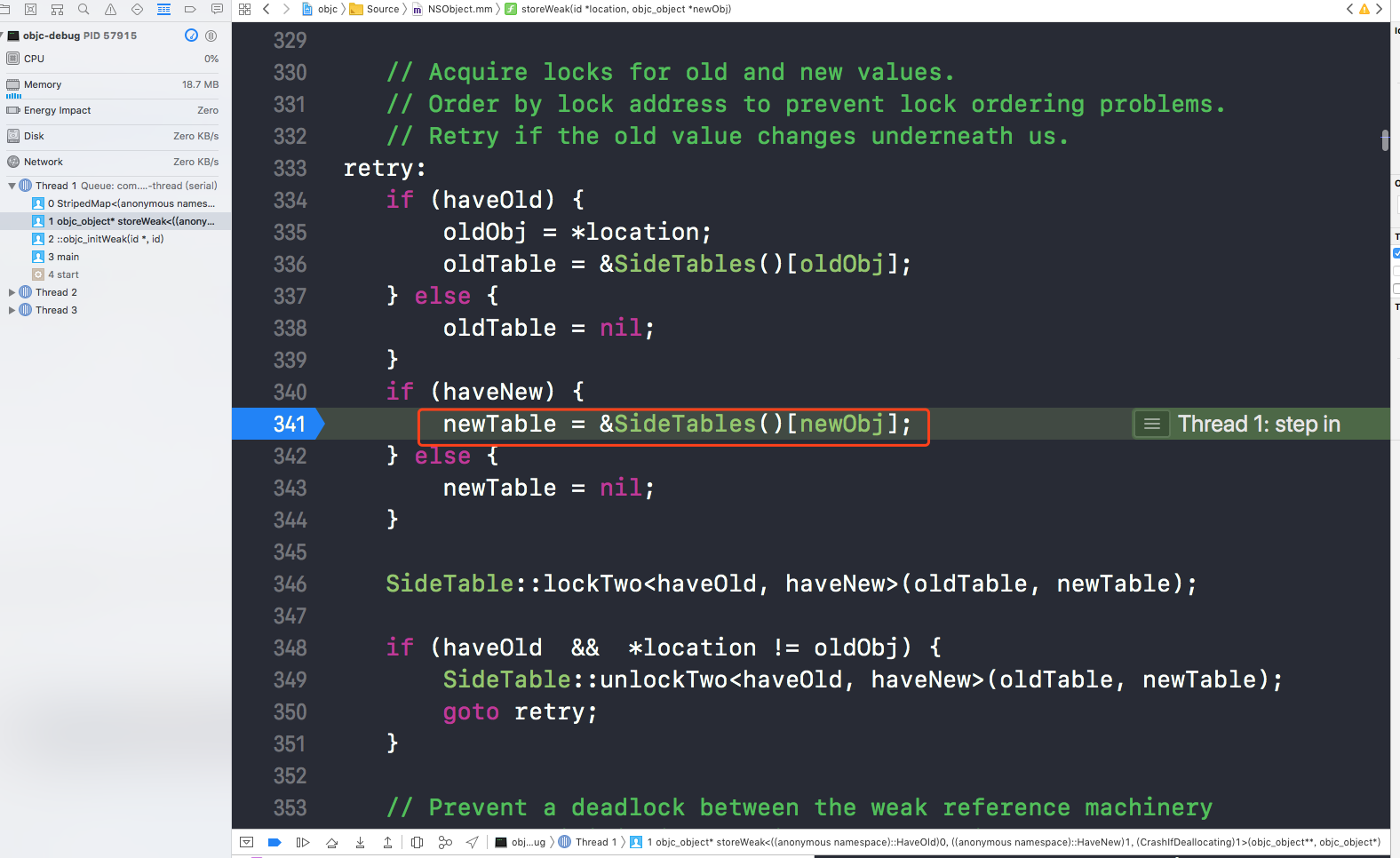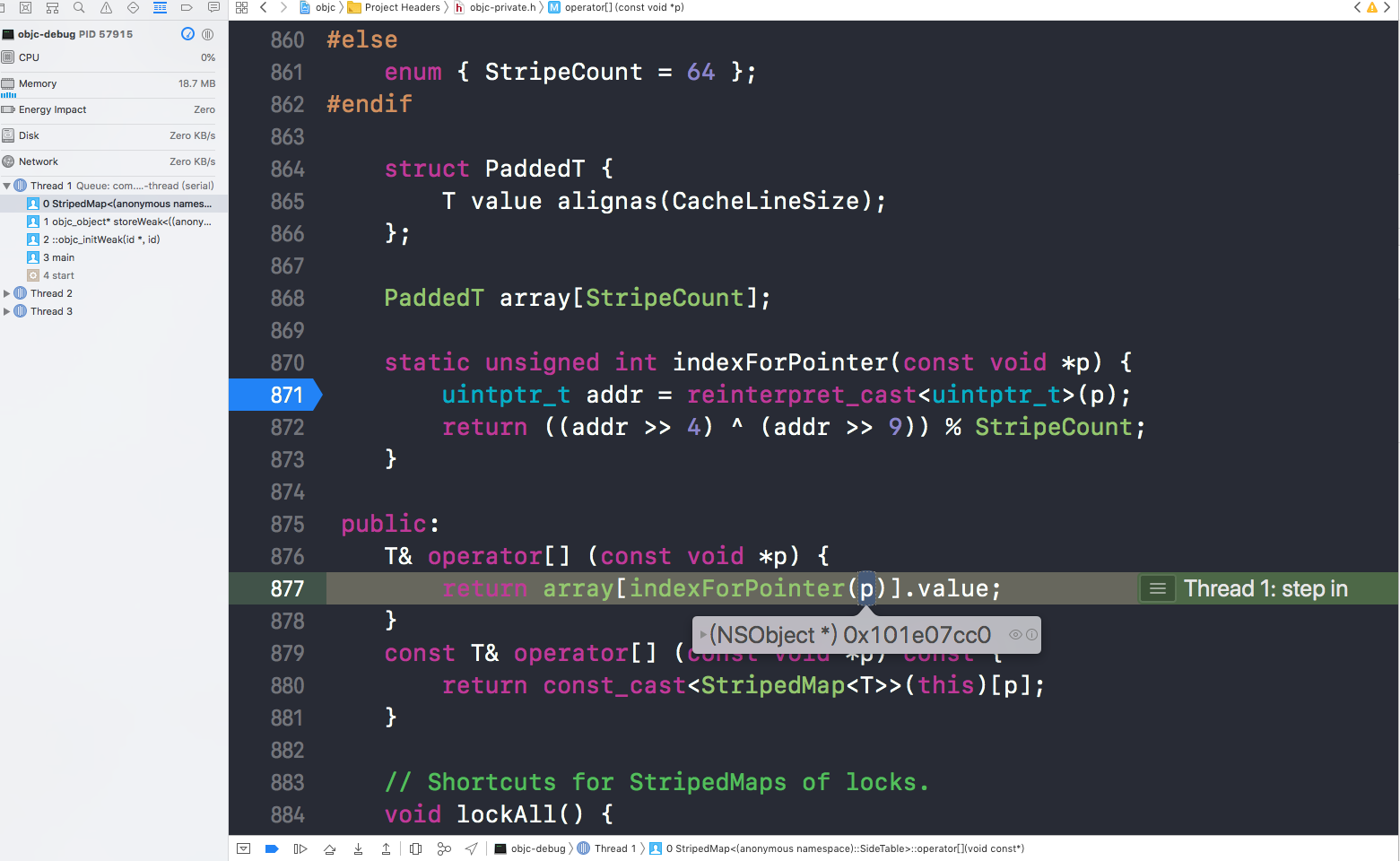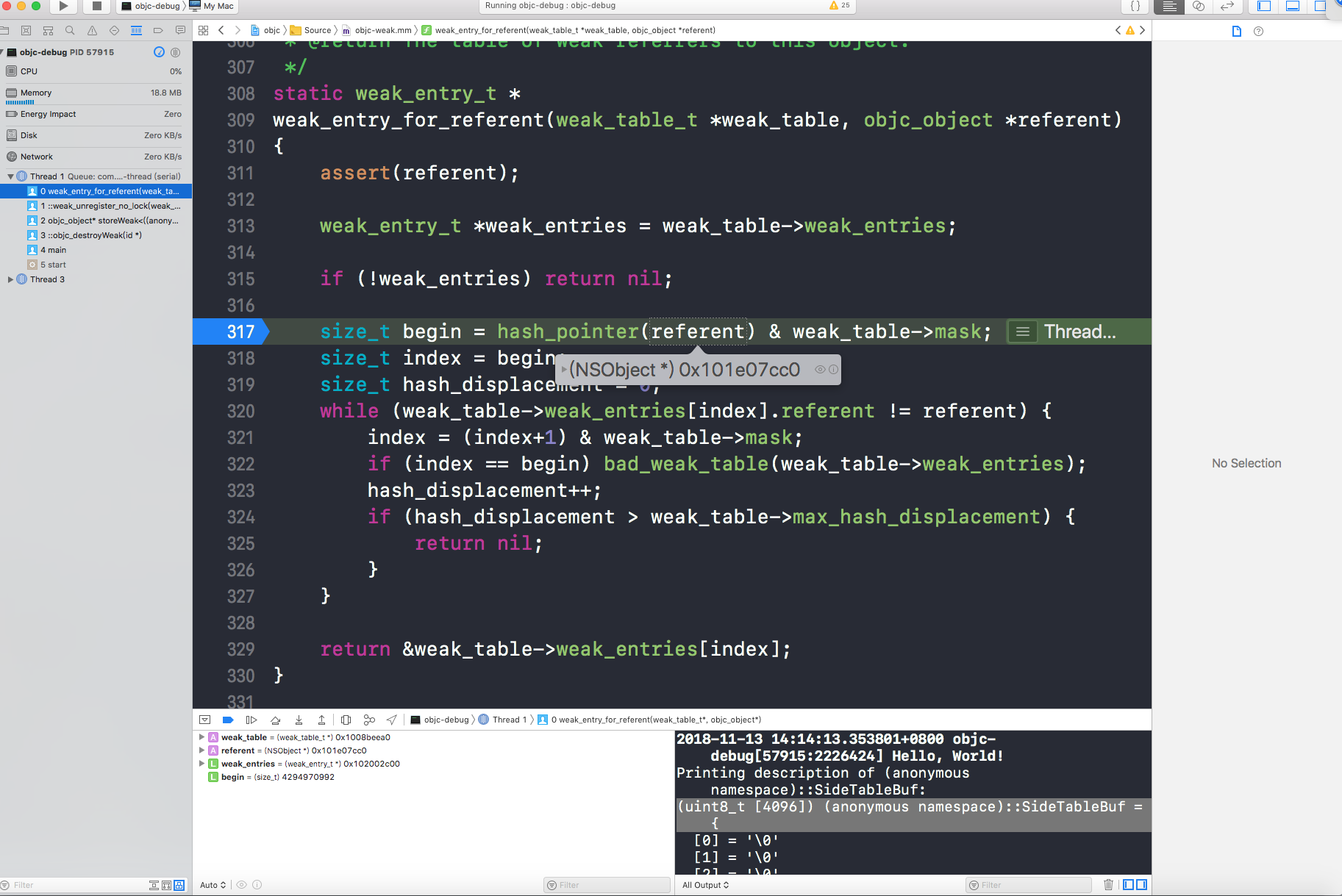一、weak引用实现原理探究
首先对《Xcode 10 下如何调试objc4-723》建立的objc源码调试工程表示感谢!
地址:https://www.jianshu.com/p/9e0fc8295c4b
大多数文章阐述了基本过程:
1.初始化一个weak对象时,runtime会调用一个objc_initWeak函数,初始化一个新的weak指针指向该对象的地址 2.在objc_initWeak函数中会继续调用objc_storeWeak函数,在这个过程是用来更新weak指针的指向,同时创建对应的弱引用表 3.在对象释放时,会调用clearDeallocating函数,这个函数会根据对象地址获取所有weak指针数组,然后遍历这个数组置为nil。最后把该条对象的记录从weak表中删除。
id objc_initWeak(id *location, id newObj) {
// 查看对象实例是否有效
// 无效对象直接导致指针释放
if (!newObj) {
*location = nil;
return nil;
}
// 这里传递了三个 bool 数值
// 使用 template 进行常量参数传递是为了优化性能
return storeWeak<false/*old*/, true/*new*/, true/*crash*/>
(location, (objc_object*)newObj);
}
template <bool HaveOld, bool HaveNew, bool CrashIfDeallocating>
static id
storeWeak(id *location, objc_object *newObj)
{
assert(HaveOld || HaveNew);
if (!HaveNew) assert(newObj == nil);
Class previouslyInitializedClass = nil;
id oldObj;
SideTable *oldTable;
SideTable *newTable;
// Acquire locks for old and new values.
// Order by lock address to prevent lock ordering problems.
// Retry if the old value changes underneath us.
retry:
if (HaveOld) {
oldObj = *location;
oldTable = &SideTables()[oldObj];
} else {
oldTable = nil;
}
if (HaveNew) {
newTable = &SideTables()[newObj];
} else {
newTable = nil;
}
SideTable::lockTwo<HaveOld, HaveNew>(oldTable, newTable);
if (HaveOld && *location != oldObj) {
SideTable::unlockTwo<HaveOld, HaveNew>(oldTable, newTable);
goto retry;
}
// Prevent a deadlock between the weak reference machinery
// and the +initialize machinery by ensuring that no
// weakly-referenced object has an un-+initialized isa.
if (HaveNew && newObj) {
Class cls = newObj->getIsa();
if (cls != previouslyInitializedClass &&
!((objc_class *)cls)->isInitialized())
{
SideTable::unlockTwo<HaveOld, HaveNew>(oldTable, newTable);
_class_initialize(_class_getNonMetaClass(cls, (id)newObj));
// If this class is finished with +initialize then we're good.
// If this class is still running +initialize on this thread
// (i.e. +initialize called storeWeak on an instance of itself)
// then we may proceed but it will appear initializing and
// not yet initialized to the check above.
// Instead set previouslyInitializedClass to recognize it on retry.
previouslyInitializedClass = cls;
goto retry;
}
}
// Clean up old value, if any.
if (HaveOld) {
weak_unregister_no_lock(&oldTable->weak_table, oldObj, location);
}
// Assign new value, if any.
if (HaveNew) {
newObj = (objc_object *)weak_register_no_lock(&newTable->weak_table,
(id)newObj, location,
CrashIfDeallocating);
// weak_register_no_lock returns nil if weak store should be rejected
// Set is-weakly-referenced bit in refcount table.
if (newObj && !newObj->isTaggedPointer()) {
newObj->setWeaklyReferenced_nolock();
}
// Do not set *location anywhere else. That would introduce a race.
*location = (id)newObj;
}
else {
// No new value. The storage is not changed.
}
SideTable::unlockTwo<HaveOld, HaveNew>(oldTable, newTable);
return (id)newObj;
}
其中涉及到一个数据结构
struct SideTable {
spinlock_t slock; // 因为操作对象的引用计数频率很快,因此系统在这里设置了一把自旋锁,保证是原子操作
RefcountMap refcnts; // 引用计数器哈希表,根据对象地址查找对象的引用计数
weak_table_t weak_table; // 维护weak指针的结构体
}
通过下面的代码取得

也就是全局的sidetables本身是一个hash表,总共大小为64;每一个value对应的是 sidetable,sidetable中保存引用计数表和weak引用表

扫描二维码关注公众号,回复:
4055300 查看本文章


找到一个sidetable表之后,要根据weak所指对象的地址hash值,找到对应存储weak指针的value结构体

接下来的操作就是修改weak引用表了